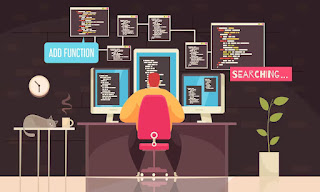Role of Computer Vision in Revolutionizing the Aviation Industry
The aviation industry is known for its relentless focus on precision, safety, and efficiency, and it is increasingly adopting advanced technologies to boost operational capabilities. Among these technologies, computer vision—a subset of artificial intelligence (AI) that allows machines to interpret and analyze visual data—has emerged as a game-changer. This innovation has significantly improved airport security, streamlined various operations, and enhanced safety protocols. As global air traffic and the number of airlines continue to grow, the adoption of computer vision technology becomes even more crucial for optimizing efficiency and overcoming key industry challenges.

Challenges Facing the Aviation Industry
The aviation sector grapples with numerous challenges, from maintaining high safety standards to controlling operational costs. Here’s a look at some critical hurdles:
Key Applications of Computer Vision in Aviation
Enhanced Security and Surveillance
Computer vision technology, integrated with AI Video Analytics Software and IoT devices, has transformed security and surveillance in aviation. These advanced systems enable facial recognition, object detection, and behavior analysis, improving the ability to identify threats such as unauthorized access, suspicious objects, and security breaches. By automating real-time threat detection, these technologies streamline passenger flow and bolster the overall safety of airports.
Real-Time Passenger Tracking
Computer vision aids in monitoring passenger movements throughout airport facilities. By analyzing crowd density and tracking behavior at critical checkpoints, the technology enhances crowd management, minimizes bottlenecks, and improves security. Airports can also use these insights to identify potential risks and enhance the passenger experience.
Predictive Maintenance

The demand for predictive maintenance in aviation is growing, with market forecasts estimating growth from USD 1.5 billion in 2020 to USD 3.8 billion by 2025. Computer Vision for Aviation Safety enhances predictive maintenance by identifying potential faults in aircraft components and predicting maintenance needs to enable timely repairs. This proactive approach prevents costly breakdowns and boosts operational safety by detecting issues before they escalate. Through real-time monitoring, computer vision systems analyze wear and tear on aircraft, allowing airlines to optimize maintenance schedules, minimize downtime, and ensure safe and reliable operations.Object Detection and Recognition
Predictive Maintenance

Object detection is pivotal for maintaining safety and operational efficiency in airports. Computer vision systems can identify unattended baggage, misplaced items, or objects posing security risks. Additionally, these systems assist in baggage scanning and runway surveillance, expediting security checks and enhancing compliance with safety regulations.
Intelligent Baggage Handling

Computer vision automates and enhances baggage handling systems. By using deep learning, the technology efficiently tracks luggage, reads baggage labels, and minimizes instances of lost luggage. It also identifies suspicious items in baggage, adding a layer of security. Automating these processes reduces errors and speeds up ground operations.
Facial Recognition for Passenger Verification
Facial recognition technology, powered by computer vision, simplifies passenger verification at check-in, security, and boarding gates. The technology compares live facial data with pre-registered images, expediting the boarding process and enhancing security by identifying unauthorized individuals. This automated system ensures seamless passenger movement and assists in threat detection when necessary.
Cargo Inspection
Securing cargo shipments is vital for aviation. AI-driven computer vision systems efficiently scan cargo for prohibited items like explosives or contraband. These systems use deep learning to analyze image data, quickly flagging any anomalies. By automating cargo inspections, airports can improve security measures and reduce inspection times.
Airport Perimeter Security and Surveillance
Monitoring extensive airport perimeters manually is challenging. Computer vision enhances surveillance capabilities by detecting unauthorized access or suspicious activities. AI-powered cameras can identify potential threats and analyze movement patterns, allowing security teams to respond swiftly and maintain a secure environment.
Crowd Monitoring and Management
Computer vision assists airport authorities in managing crowds, especially during peak travel periods. By monitoring real-time data on crowd density and unusual activities, the technology helps reduce false alarms and manage large gatherings effectively. It also detects emergencies, such as fire or smoke, providing an additional layer of safety.
Missile Guidance in Defense Applications
In military aviation, computer vision is crucial for missile guidance and target detection. Using AI for image processing and object recognition enhances precision, making missile systems more reliable. This technology ensures accurate targeting, which is essential for defense applications.
Key Takeaways
Computer vision is revolutionizing the aviation industry by enhancing safety, boosting efficiency, and optimizing operations. From improving security protocols to enabling predictive maintenance, the technology’s impact is substantial. However, integrating computer vision requires addressing challenges such as processing large data volumes and seamlessly incorporating these systems into existing infrastructure. Despite these hurdles, the benefits are undeniable, and as technology continues to advance, computer vision will play an even greater role in shaping a safer and more efficient future for air travel
%20(1).jpg)


Comments
Post a Comment